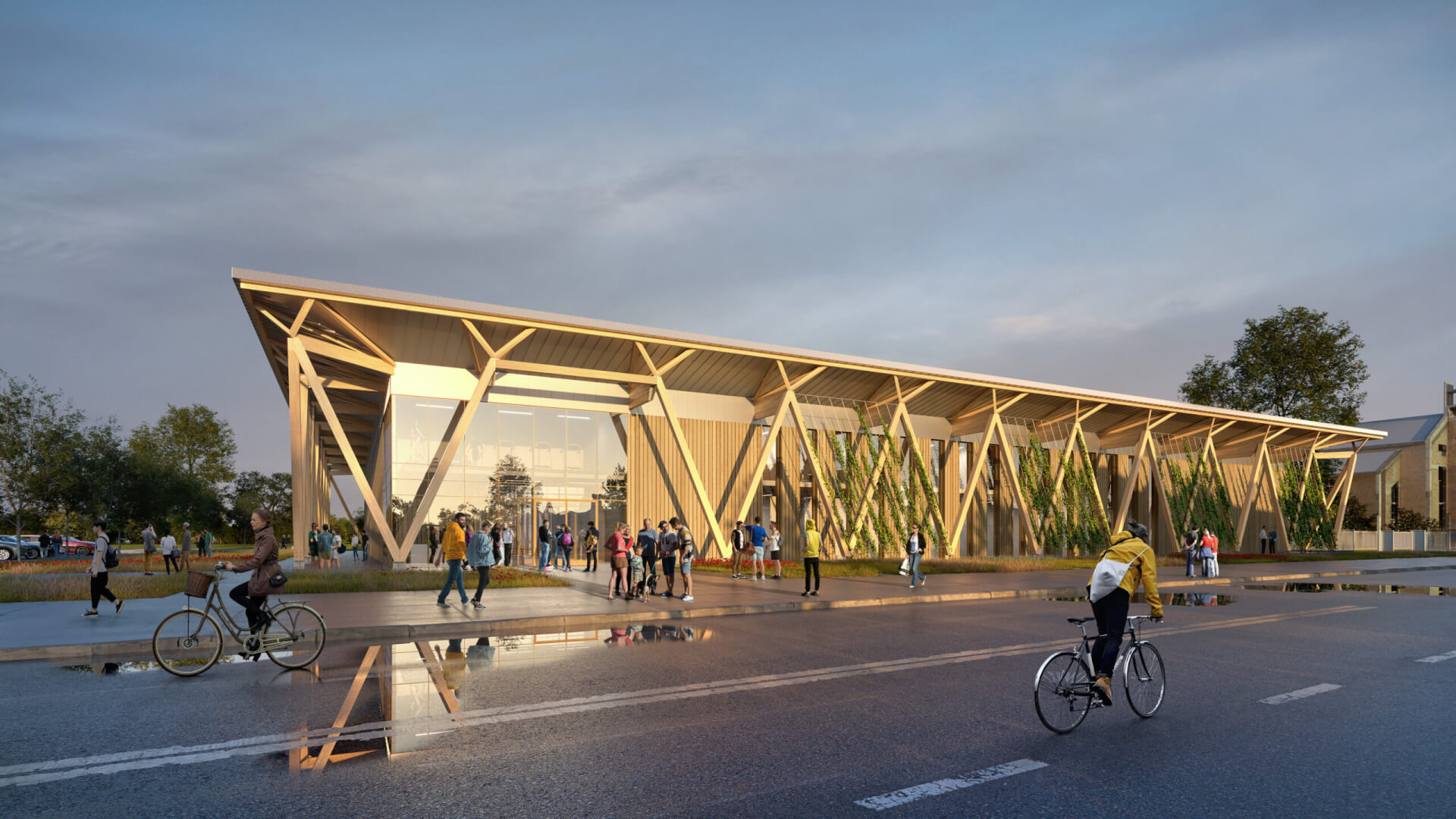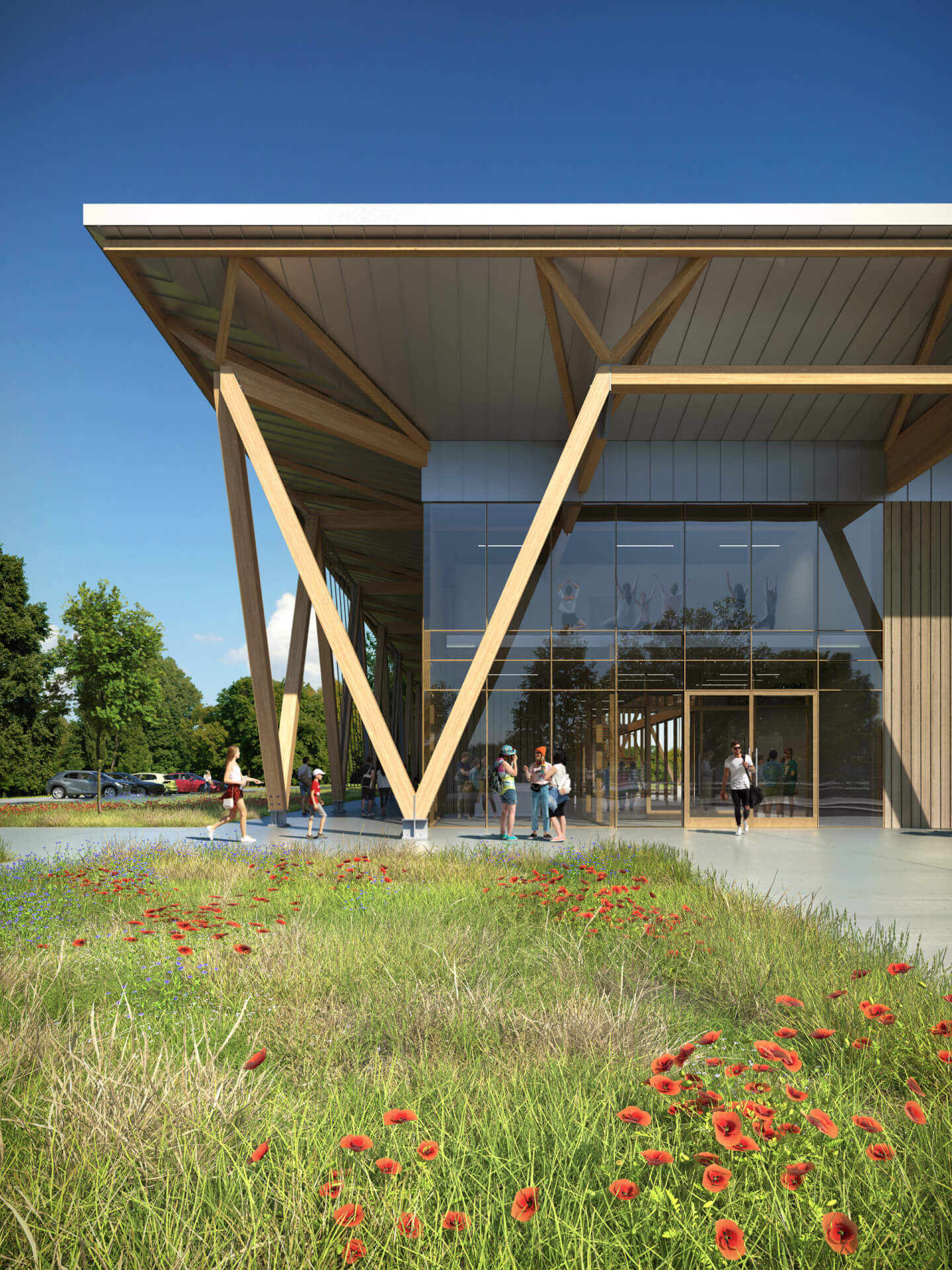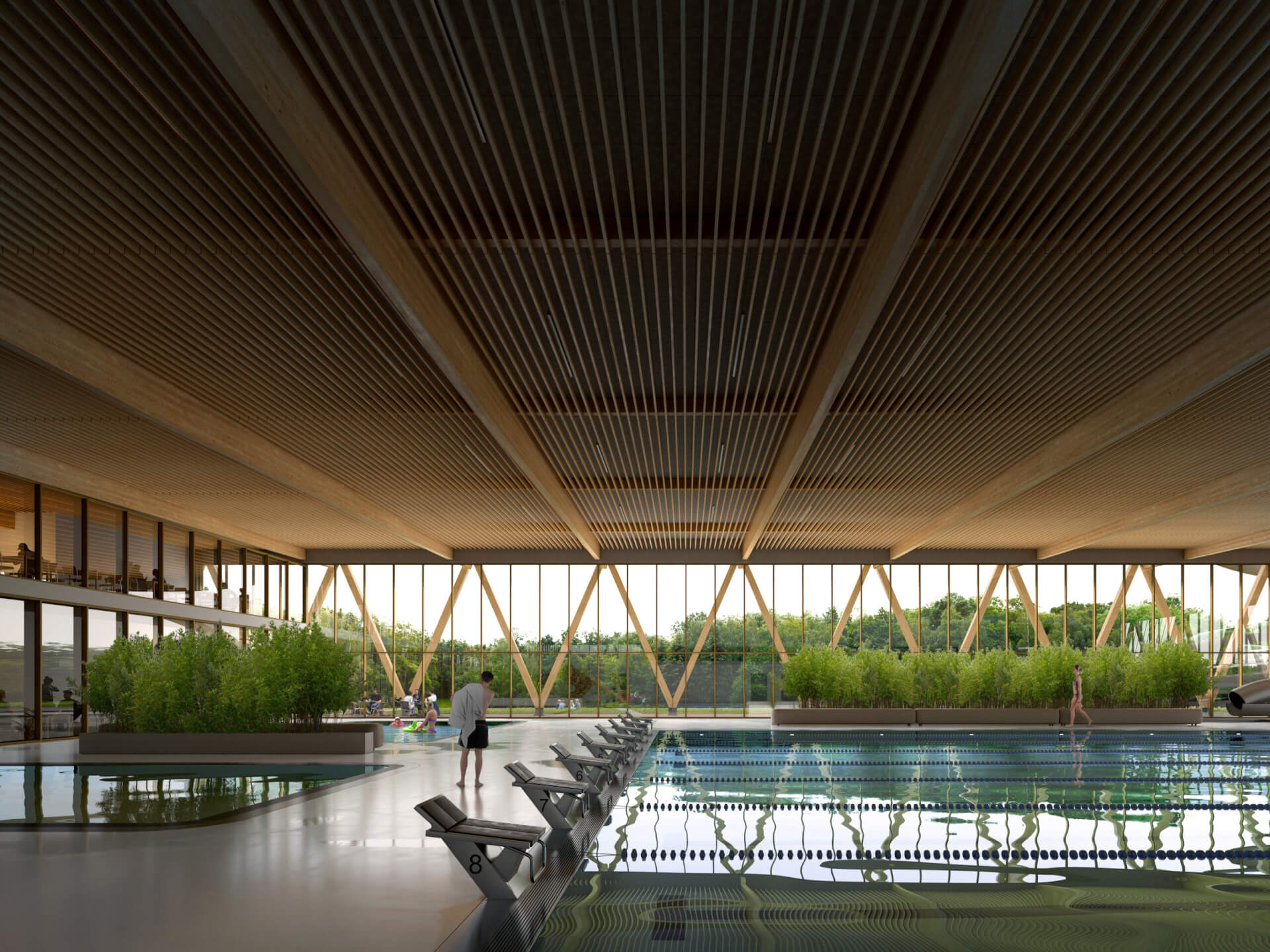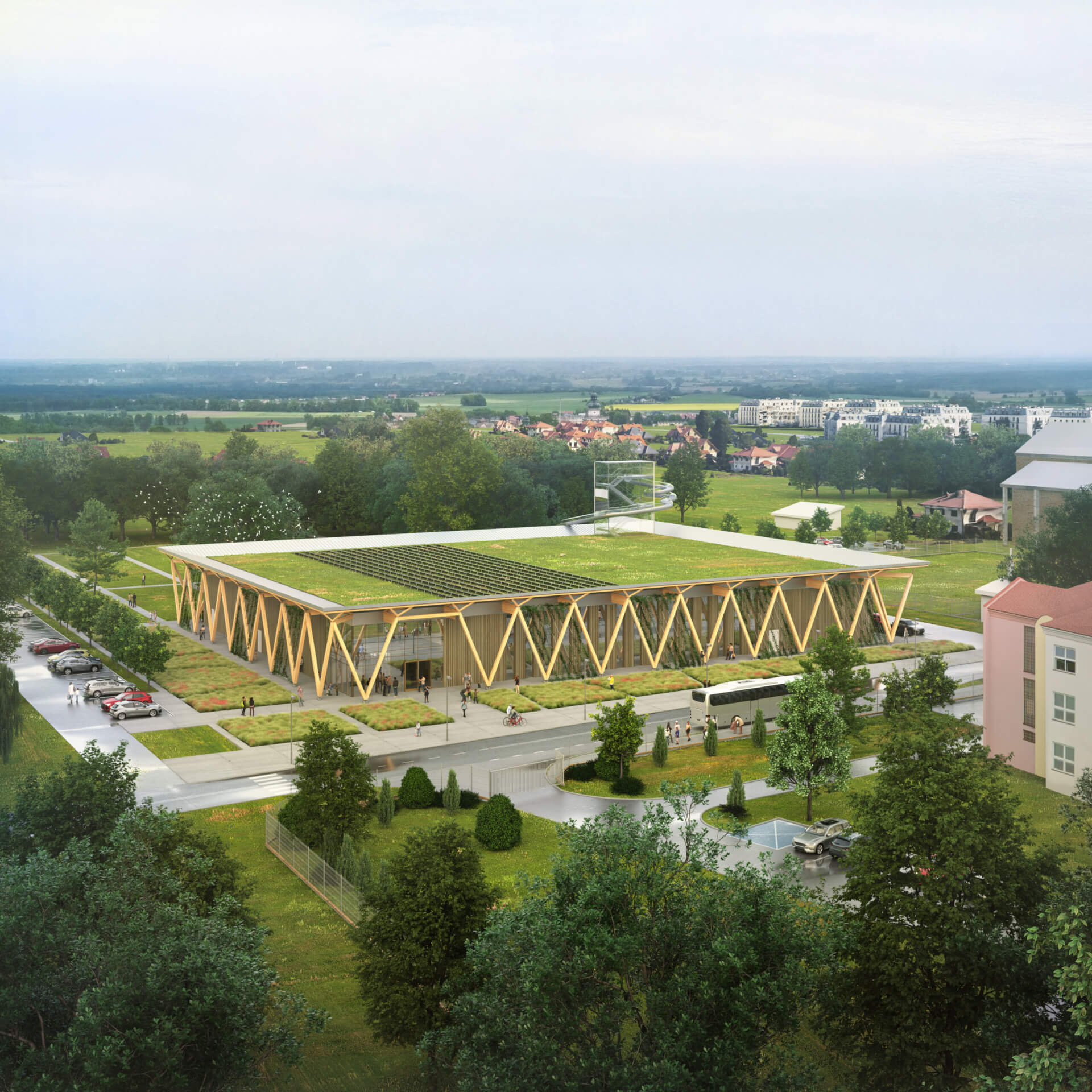swimming pool
Public buildings, in addition to being subject to functionality criteria, should also play a social and educational role. This statement seems obvious, but unfortunately, most users of public facilities only associate them with the activities of the institutions housed in them. Active cultural centers, clubs, and sports organizations often operate in architecturally poor spaces, yet they function with enthusiasm and energy. Spatial culture in Poland is often neglected and rarely associated with the quality of a given public institution’s operations.
Yet, in many places around the world, pioneering buildings make modest, previously unknown organizations leaders in promoting culture, education, or science. Perhaps this is not the most accurate example, but numerous Peggy Guggenheim Foundation museums attract thousands of people not only interested in Cubism, Surrealism, or other “isms,” but also curious about these extraordinary buildings. Of course, the question that is often raised, whether the work or the building is more important, is valid, but the answer is no longer so obvious. The “Bilbao effect” is a dream for many cities and investors…
This undoubtedly means that architectural spaces have the power to influence, which must be imagined, directed, and observed as it develops and writes its own scenarios.
In this spirit, the idea for a new swimming pool was formed, although we were not looking for an architectural icon, but rather a modest, intelligent, and ecological structure tailored to the needs of the district’s residents.
Somewhat ironically, we decided that the pool function itself is secondary to the social and educational function. By designing a spacious “neighborhood arcade” that surrounds the building on all sides, we sought a space that is inviting and open not only to swimming enthusiasts. Our “social roof” is an element designed to unite the local community, inviting them under its safe, rain-sheltered eaves, opening up to collective action ideas, and community time spent in small, friendly groups. Under the roof, one can imagine various scenarios: from neighborhood meetings, through regular markets, no-longer-garage sales, performances by small bands, meetings for seniors, all kinds of workshops, or even archaeological lectures related to this specific location.
There are many possibilities, but one thing is certain: from the east side, the café bustle will merge with the open space of a romantic park, where blocks of flowery meadows are intertwined with short-clipped grass and a soft wall of greenery winding along the watercourse. This valuable natural space is the greatest asset of this location. The garden (note, you can also imagine growing a few neighboring plots here!) is a green, healthy energy accumulator that attracts local residents. The proximity of nature acts like a magnet and, almost by chance, draws strollers into the arcade, giving them shelter in bad weather and shade in hot summers. This attraction is so strong that even vegetation “migrates” towards the “social roof”, tying the wooden structure with geometrically woven creepers. Trees and the building are made of the same materials: wood and green leaves. There is a certain literalness here, but it is so childishly tempting and simple that it is hard to resist.
The development around the building is based on the principle of geometric simplicity, clear paths, and maximizing green areas in the form of various high and low decorative types of grass, gradually transforming into flowery fields, and smoothly blending into the natural, romantic park.
The building is situated in such a way that from the north side of the plot, there is a generous opening towards the green wall of trees and fields of meadows, grass, outdoor stage, gym, or playground. This opening will never disappear, even if a building is erected very close to the plot boundary on the adjacent plot. The window to the green wall of trees will always remain open.
The interior of the building is shaped according to a similar logic, with a transit hall connecting all important spaces. Importantly, the pool foyer, already from the entrance, leads the users of the facility directly into the park. This decision allows for a view of nature not only for pool users but also for accompanying persons who spend time in the lobby, self-service café on the ground floor, or a small bistro on the top floor. A clear opening to nature is the essence of this building.
Apart from the intentionally created frame for the park, this linear space allows for a panoramic view of the interior of the swimming hall. This is a very important design decision: the longitudinal foyer is like a screen on which you can admire the first swimming steps of your children (swimming pools for learning to swim and paddling pools are located closest to the hall), or simply observe carefree water play.
The possibility of observing younger children’s activities by their guardians is a great advantage of this space.
The dominant colors and materials known from the facade solutions prevail in the shared hall interior. Wooden cladding provides warmth texture and acoustics, and lush greenery on the walls and hanging from the suspended ceiling creates a pleasant microclimate, encouraging further contact with nature and exit to the park spreading to the east. The overall atmosphere is complemented by a glass floor in which artifacts found on the site during archaeological work are displayed.
The selection of finishing materials and type of construction is dictated by the desire to create a building that is not only energy-efficient, but also, perhaps most importantly, has a low carbon footprint. Long-term statistical data shows that over 80% of a building’s CO2 emissions are generated during the construction process, not during use. Therefore, wood, despite being used for centuries, is experiencing a renaissance and is undoubtedly a material of the future.
In the new swimming pool, the main structure, apart from the foundations, stairwell cores, and technical rooms underground, is designed in wood. Girders supported on a zigzag mesh of external columns form the basic, independent structure of the building. In the event of necessity (e.g. waiting for full funding), one could even imagine staging the construction process, involving the production of reinforced concrete elements first, followed by a wooden roof structure. Modular interior walls (also using layered wood technology with insulation) would be set up like blocks already under a closed roof. Of course, every stage involves many pitfalls, but the ability to start an investment, and then build and finish it in stages, gives the investor a certain freedom of planning and the ability to achieve their goal step by step, which is not insignificant in difficult times.
Of course, it would be best if the building were constructed in one stage, without unnecessary stretching over time, especially since the wooden structure will be prefabricated, which will allow the construction process to be completed in around 8-10 months.
 all
all 



